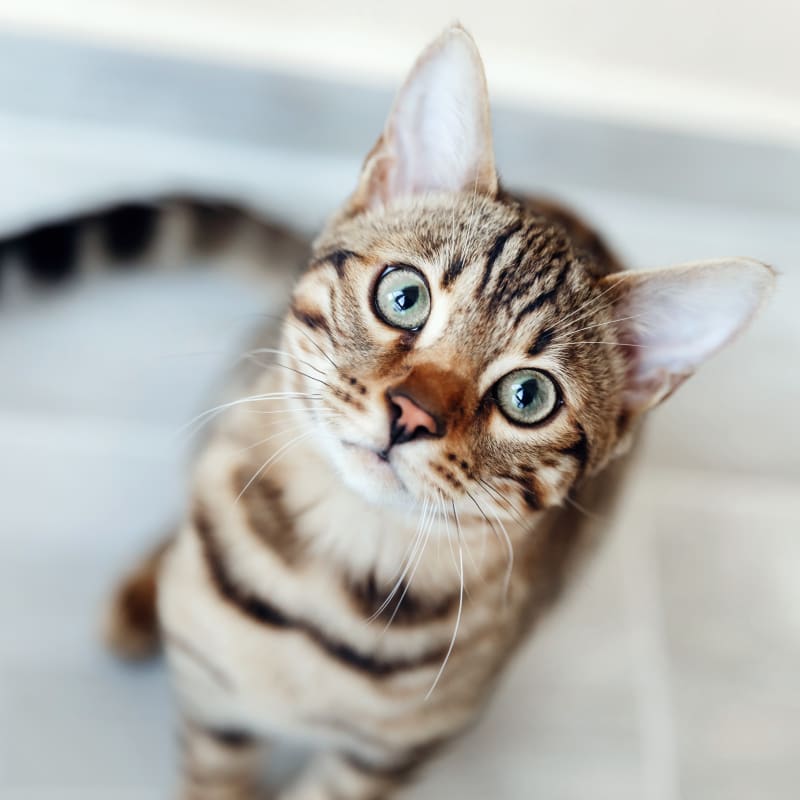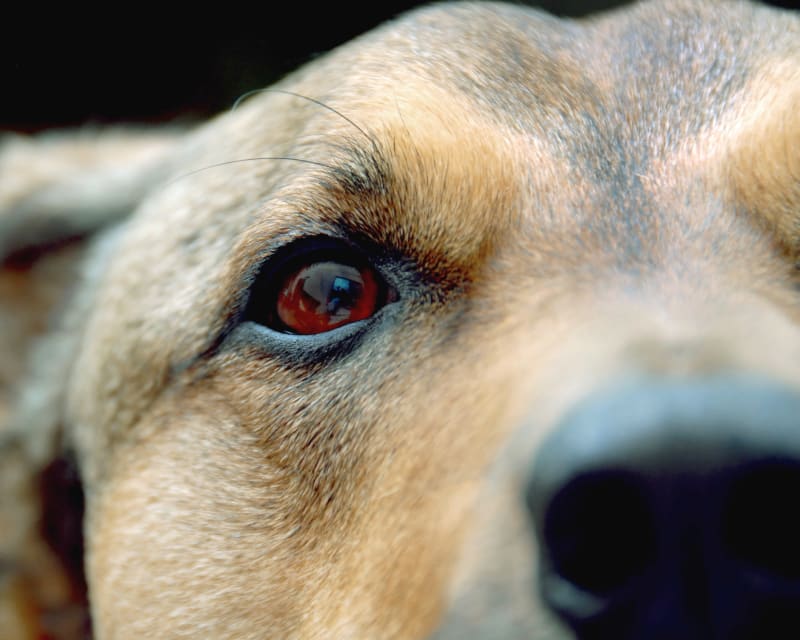At our Hoquiam veterinary clinic our experienced vets offer vision care and the diagnosis and surgical treatment of eye and eyelid disorders for cats and dogs.
What are ocular procedures for pets?
Some of the most common veterinary ocular procedures our vets at Raintree Veterinary Center perform include cataract surgery, entropion surgery, ectropion surgery, eyelid tumor removal, cherry eye surgery, and exenteration of the orbit.
We are fully equipped for ophthalmic examinations, diagnostics and a range of ophthalmic surgical procedures to help keep your dog or cat seeing clearly.

Symptoms of Eye Problems in Pets
Our experienced team of veterinarians are able to diagnose and treat the following eye symptoms in dogs and cats:
- Pain
- Redness
- Increased Tear Production
- Visible Third Eyelid
- Corneal Cloudiness
- Dilated Pupils
- Obviously Enlarged Eye
Common Eye Problems in Pets
Some of the most common eye problems our vets at Raintree Veterinary Center in Hoquiam treat include:
- Cataracts
- Scratches
- Abrasions
- Drainage
- Corneal Ulcers
- Infections
- Vision Loss

Ophthalmology FAQs
- What are some common eye problems for senior pets?
Cataracts
As with people, sometimes the lens of our pet's eye can develop a cloudy, opaque cataract. Cataracts block light from reaching the back of the eye, and this can result in poor vision or even blindness, depending on their severity.
Glaucoma
The production and drainage of fluid in the eye are precisely balanced to maintain constant, consistent pressure. When this delicate balance is disrupted and pressure within the eye increases, it's called glaucoma.
Symptoms of glaucoma include pain, increased tear production, redness, corneal cloudiness, a visible third eyelid, and/or dilated pupils. In advanced cases, your pet's eyes can become enlarged.
- What should I do if my dog/cat has something in their eye?
Start by trying to remove the foreign object or substance by flushing your pet’s eye with saline solution. Unfortunately, this can be difficult if your pet is experiencing eye pain.
Never attempt to remove the object with your fingers or tweezers, as this can damage your pet's eye.
If you cannot flush the object out yourself, take your pet to your veterinarian right away so that your pet doesn’t experience any complications.
- Why should I consider cataract surgery for my dog or cat?
Not all dogs and cats that have cataracts necessarily need cataract surgery. In fact, most don't. This is because most of the time, lens opacities in dogs and cats are very small, and don’t interfere much with vision.
Your vet or a veterinary ophthalmologist can determine whether cataract surgery is required for your pet. Surgery is usually only done when the cataract is severely hindering the animal's ability to see.
Cataract surgery is not a life-saving surgery — it is a quality of life surgery. Restoring a blind dog or cat's vision with cataract surgery can give the animal a new lease on life.
For a blind dog or cat to again be able to see its owner, play with toys, look out the window and actually see things is life-changing for the patient and their owner. This is especially true if the animal is elderly and also deaf or hard of hearing, and/or has dementia or cognitive issues.
- What is cherry eye, and how is it treated?
Dogs have three eyelids: two that are visible and a third one that is usually hidden from view in the inner corner of the eye. The third eyelid contains a tear producing gland. This gland is also usually invisible, but some dogs have a congenital weakness of the ligaments that hold it in place.
When these ligaments fail, the gland pops out of its normal location, and it looks like there is a “cherry” stuck at the inner corner of the eye.
To treat cherry eye, your vet may perform a simple surgery to attach the gland back in a more normal position.
- My dog has Entropin (eyelids that roll inwards). What are the treatment options available to me?
When a dog's eyelids roll inwards, hair rubs on the surface of the eye each time the dog blinks. This causes pain, and increased tear production, and will eventually damage the cornea if left untreated.
If entropion has developed because of a condition that will eventually resolve, your vet can temporarily suture the eyelids into a more normal position. In other cases, surgery may be necessary to permanently repair abnormal eyelid anatomy.
